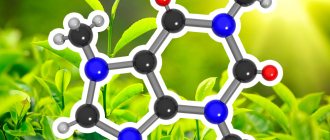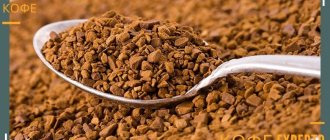What dose is too much?
There is no exact answer to this question - a safe dose of caffeine depends on your health condition. Some people drink strong coffee all day long without any harmful consequences, while for others, just a single cup causes their blood pressure to rise, their sleep to be disturbed, headaches, and nerves. The nervousness caused by caffeine can be alleviated by the amino acid L-theanine, which is found in green tea leaves. Interestingly, similar symptoms are observed in people with caffeine withdrawal. They also yawn, complain of fatigue, runny nose, muscle stiffness, and find it difficult to concentrate. Unfortunately, caffeine cannot be considered a completely safe product.
Benefits of caffeine
If you consume caffeinated drinks correctly, it will have many positive effects on the human body.
- Morning awakening. Sometimes it is difficult to imagine and start your morning without a cup of coffee. A small dose of caffeine will help the body prepare for the day.
- Physical endurance. Research has shown that caffeine helps athletes improve endurance and strength. Accordingly, training becomes more effective, performance increases when performing strength loads and in fitness.
- Improved brain activity. In addition to its effects on physical performance, caffeine also helps the brain think more clearly. Infrequent use of caffeine in people with short-term memory and slow mental activity improved their performance.
Healthy adults - allowed within reasonable limits
Authoritative organizations such as the European Food Safety Authority (EFSA), the US National Academies of Sciences (NAS) and Health Canada have concluded that healthy adults can safely consume up to 400 mg of caffeine per day. More than 400 mg can be taken on special occasions (for example, during emergency preparation for an exam). This dose will not cause side effects if such force majeure events occur rarely.
The effects of caffeination depend on the time of administration. Most people can drink 200 mg of caffeine in one sitting less than 2 hours before intense physical activity. However, even 100 mg can disrupt sleep if you drink coffee or energy drink at night. Caffeine leaves the body rather slowly, the half-life is about five hours, so people who drank strong coffee less than 10 hours ago still have some amount of the alkaloid fermenting in their blood.
So, healthy adults can consume up to 400 mg of caffeine per day, but not before bed.
Substances that are obtained by extraction from coffee beans during the preparation process
Vintage espresso coffee maker
The taste of coffee and its special properties depend on the chemicals that are obtained during the process of roasting coffee beans and preparing the coffee itself. In this section we will talk about the main substances and how different preparation methods affect their extraction.
Making espresso
Caffeine
Caffeine is one of the main substances obtained during extraction from coffee beans. It is thanks to him that coffee gives those who drink it a boost of energy. Caffeine also gives the drink its characteristic bitterness. When coffee is prepared using the espresso technique, more caffeine is extracted from the ground coffee compared to other preparation methods. But this does not mean that if you drank one shot of espresso, you received a greater dose of caffeine than if you drank a cup of coffee prepared in, for example, a drip coffee maker. After all, espresso servings are much smaller in volume than servings in large cups in which coffee prepared in a drip coffee maker is served. Therefore, although espresso coffee has a much higher concentration of caffeine, the total amount of caffeine in a shot of espresso is less than in coffee prepared by other methods, since it is customary to drink espresso in very small portions.
Trigonelline
Trigonelline is one of the substances that gives coffee its special rich caramel aroma. The flavor is obtained not during preparation, but during roasting of the coffee beans. Due to heat treatment, trigonelline breaks down into aromatic substances called pyridines.
Acids
Coffee contains acids. You've probably already noticed that if you pour cream into espresso coffee, it curdles. The three main acids in coffee are citric, quinic, and malic. There are other acids in coffee, but in very minute quantities.
The citric acid content is reduced by approximately half after frying. Citrus notes and acidity in coffee are due to citric acid. Since the content of this acid in coffee beans is small, and during extraction it decreases again, the taste of citric acid in coffee is not very strong.
Thanks to malic acid, the smell of apples and pears is slightly noticeable in coffee, improving its aroma.
Quinic acid gives coffee a sour taste if it is kept at temperatures above 80°C for a long time, for example if it is left in a warming pot.
Malic acid gives coffee notes of apple and pear and improves its taste because it also adds sweetness to the coffee.
Some other acids that are extracted into the finished drink are phosphoric acid, which gives coffee fruity notes, acetic acid, which gives coffee notes of lime, and tartaric acid, which gives coffee a grape flavor.
Carbohydrates
Coffee contains a number of carbohydrates that make coffee sweet. You probably haven't even noticed before that coffee is actually somewhat sweet, especially if you think of coffee as a bitter drink. But there is still sweetness in it, and you can notice it with practice, especially if you drink good quality espresso, brewed by someone who knows how to prepare coffee properly. The brown color of roasted coffee is also due to carbohydrates. When cooked, coffee beans change color from green to brown, as the Maillard reaction (a chemical reaction between amino acids and sugars) occurs in carbohydrates under the influence of temperature. The color of golden brown bread, fried meat, vegetables, and other foods is also the result of this reaction.
The balanced extraction of all these and several other components produces the diverse and unique variations of coffee taste and aroma that we love so much. Below we will look at a number of methods for achieving a balanced taste. It is worth noting that the concentration of each substance depends on its initial content in the coffee beans. This content depends, in turn, on the soil and other factors related to the growing conditions of the coffee tree.
Pregnant and lactating women - handle with caution
The European Food Safety Authority recommends that lactating and pregnant women, as well as those planning a pregnancy, limit their daily caffeine intake to 200 mg. Some experts allow 300 mg/day, however, according to some reports, caffeine causes nausea in pregnant women and, much worse, the risk of miscarriage.
There are very few clinical studies on the effects of caffeine on pregnant and lactating women, and in such a situation it is wiser to limit the consumption of the alkaloid. In pregnant women, the time required to remove caffeine from the body increases by more than three times, so caffeine can accumulate: what you drink in the evening is added to what was stored in the morning, and the total dose of the substance circulating in the blood turns out to be higher than calculated.
So, pregnant and lactating women should not exceed the daily dose of 200 mg, although they are allowed 300 mg.
Excess
Excessive caffeine consumption can lead to unpleasant consequences for the body:
- sleep disturbance;
- increased pressure;
- cardiac diseases;
- gout;
- urinary incontinence;
- fibrocystic mastopathy;
- upset stomach;
- frequent headaches;
- increased anxiety;
- suppression of collagen production;
- increased bone fragility.
© logo3in1 — stock.adobe.com
Children and adolescents - it is better to abstain
There is clearly insufficient data on safe doses of caffeine for children and adolescents. According to European experts, 3 mg/kg of body weight per day will not harm young consumers. In Canada, a dose of no more than 2.5 mg/kg/day is considered safe. In accordance with these standards, children, depending on age, are allowed to:
- 4-6 years - 45 mg/day
- 7-9 years - 62.5 mg/day
- 10-12 years - 85 mg/day.
Not everyone agrees with this opinion. Thus, in 2013, a group of distinguished American doctors sent a letter to the US Food and Drug Administration calling for a ban on the sale of caffeinated drinks in schools. Scientists note that energy drinks are reliably correlated with adverse health effects in children, adolescents and young adults.
So the safe level of caffeine for children and adolescents has been determined, but some medical organizations are calling for more thorough research into this problem, and until data is collected, the less caffeine a child consumes, the better.
For those suffering from cardiovascular diseases, consult your doctor.
Caffeine increases blood pressure for 3-4 hours, this is a proven fact. However, with regular consumption this effect is not so noticeable. In healthy people who do not exceed the permitted 400 mg, the risk of developing cardiovascular diseases does not increase. But for people with high blood pressure or those who have already suffered cardiovascular disease, in other words, for patients who are contraindicated for stimulants, the effects of caffeine intake are not so obvious. A moderate amount will not harm them, but it is better to consult a doctor about specific doses.
So, people with high blood pressure or a history of cardiovascular disease are not advised to regularly drink caffeine-containing drinks. There should be no harm from small portions, but it is better to seek advice.
Effect on the body
Caffeine is a stimulant of the central nervous system, activating the brain, motor function, increasing endurance, performance, and reaction speed. Taking the substance leads to increased breathing, heart rate, increased blood pressure, dilation of the bronchi, blood vessels, and bile ducts.
Caffeine has the following effects on the body:
- Activates brain function.
- Reduces fatigue.
- Increases performance (mental and physical).
- Accelerates heart contractions.
- Increases blood pressure.
- Stimulates the functioning of the gastrointestinal tract.
- Speeds up metabolism.
- Has a diuretic effect.
- Increases breathing speed.
- Dilates blood vessels.
- Stimulates the liver to produce additional sugar.
How much do you need to drink to reach your caffeine limit?
To answer this question, you need to know how much caffeine is in each cup/can/bottle you drink. This information is contained in Figure 1, but for those who find it difficult to concentrate without caffeine, as well as for adherents of a mono-diet (like starting the day with coffee from McDonald's, they won't take anything else caffeinated in their mouth) there is also Figure 2.
Rice. 2 How many and what drinks can you drink so as not to exceed the daily caffeine limit of 400 mg.
Sources
It should be remembered that even decaffeinated drinks contain small amounts of caffeine (from 1 to 12 mg per cup).
| Drink | Volume, ml | Caffeine content, mg. |
| Custard | 200 | 90-200 |
| Caffeine-free brew | 200 | 2-12 |
| Espresso | 30 | 45-74 |
| Soluble | 200 | 25-170 |
| Coffee with milk | 200 | 60-170 |
| Black tea | 200 | 14-70 |
| Green tea | 200 | 25-43 |
| RedBull | 250 | 80 |
| CocaCola | 350 | 70 |
| Pepsi | 350 | 38 |
| Hot chocolate | 150 | 25 |
| Cocoa | 150 | 4 |
| Products | ||
| Black chocolate | 30 gr. | 20 |
| Milk chocolate | 30 gr. | 6 |
What happens if you overdo it?
When taken orally, 15 mg of caffeine per kilogram of body weight is toxic, and 150 mg is fatal. That is, a person who weighs 68 kg will be poisoned by one gram of caffeine, and will die from 10 grams. Think about this before you drink 10 cans of energy drink on a bet.
Caffeine powder is a special song. It is used as a nerve stimulant and is promoted as a fitness and muscle-building aid, and some people voluntarily take it for this purpose. The US Food and Drug Administration warns that one teaspoon of pure caffeine powder is equivalent to 28 cups of coffee. It is much easier to overdose on powder than to overdose on energy drinks. Large amounts of caffeine increase the activity of the sympathetic nervous system, causing severe heart palpitations and convulsions.
Although poisoning from caffeine powder is rare, it does happen, and sometimes with fatal consequences. Both athletes who independently take this substance and specialists make mistakes. So at the University of Northumbria, scientists, conducting an experiment, accidentally gave two students 30 g of caffeine instead of 300 mg. Fortunately, the students survived, but they had to spend some time in the hospital.
If you are healthy, then you can safely drink drinks containing caffeine, guided, of course, by Figures 1 and 2, but it is better not to deal with powder.
Coffee
Thank you!
People have been enjoying coffee since at least the fifteenth century, and perhaps even earlier, although we do not have precise records of earlier coffee preparations. Historians claim that the people of Ethiopia were the first to drink coffee, and that from there this drink spread to Yemen and other neighboring countries, and from these countries it already came to Europe. According to some reports, Sufi Muslims used coffee in religious rituals. For many years, coffee was banned in the Arab world by conservative members of the Islamic clergy due to its unusual properties, but the ban was eventually relaxed. The Church in Europe also disapproved of coffee for some time due to its popularity in the Muslim world, but soon came to terms with the growing taste for the drink in Europe. Since then, coffee has become popular all over the world. Coffee is probably the first thing that comes to mind when you think about a typical start to the day. So what is coffee, how to prepare it, and why do we love it so much?
M-r-r-yau. Thank you!
Coffee beans are the seeds of the berries of a plant in the madder family ( Rubiaceae
).
There are many different plant species in this family, but the most widely used for coffee are the Arabian Coffea Arabica
(Arabica variety) and the Congolese
Coffea canephora
(Robusta variety), with the Arabica variety being the more popular. In English, coffee berries are sometimes called cherries for their color and shape, but they have no relation to the cherry tree. The coffee beans are first cooked, i.e. roasted, and then prepared into coffee, and during these processes various substances, including aromatic oils and solid particles, are extracted. These substances create the special taste and aroma of coffee and give it invigorating properties.
As far as we know, one of the first ways to prepare coffee was to boil coffee beans in water. While trying different brewing methods, people noticed that if coffee is in contact with hot water for too long, the drink becomes bitter, and if, on the contrary, coffee is not brewed long enough, it becomes sour. Therefore, various preparation methods have been developed to ensure the best extraction. Trying different preparation methods, bartenders in coffee shops noticed that pressure improved the preparation process and the taste of the finished drink, and thus the espresso technique was born.
Coffee has been prepared in many different ways over the centuries, and what we know about coffee preparation comes from hundreds of years of experimentation in the kitchen. It was through these experiments that coffee lovers determined the optimal temperature, roasting and brewing time, grind size, and use of pressure in the brewing process.
The best thing you can do
All of the above recommendations are based on the long-term effects of regular caffeine consumption. Higher doses, up to 800 mg, can be taken on special occasions if health permits. So, in one study, different doses of caffeine were taken before training. The alkaloid increased the content of testosterone in the blood, that is, it showed itself to be an anabolic steroid. However, the 800 mg dose also increases the concentration of cortisol, which exhibits a catabolic effect.
The more often you ingest large portions of caffeine, the more likely you are to experience its negative effects. In addition, with frequent use, some of the benefits of caffeine are lost and a kind of tolerance is developed. To avoid this, caffeine is taken periodically. This makes sense if caffeine is drunk for the release of adrenaline, and for the synthesis of dopamine, regular breaks in drinking coffee, tea and energy drinks are necessary. But if caffeine is relied upon as a means of reducing the risk of developing Parkinson's disease or type 2 diabetes, it must be consumed regularly, and it is better not to swallow powders, but to drink tea and coffee. Caffeine lowers blood glucose levels, but this effect is lessened when taken in powder form.
High doses of caffeine improve physical performance, but regularly exceeding the upper limit of consumption is harmful to health. Moreover, both regular and occasional use of caffeine have their benefits. It all depends on the effect you want to achieve.
Source:
Espresso preparation procedure
Coffee at dawn
The technique for preparing espresso coffee includes the following steps:
Tamping. An unusual solution for a photographer and coffee lover is to use a 52mm hood as a tamping stand and to extend the edge of the portafilter. This is much more convenient than other devices, such as yogurt cups, and is also 10 times cheaper than “professional” (read: very expensive) devices like tamper stands
- Roasting coffee beans.
- Grinding grains.
- Coffee dosage.
- Pouring ground coffee into the portafilter basket.
- Tamping coffee in a portafilter. This step also includes breaking up any clumps and leveling the coffee inside the portafilter basket.
- Pre-wetting, which is only possible in some espresso coffee makers.
- Espresso coffee extraction. In English, this process is also called pulling, since in early manual espresso machines the barista literally pulled the handle to get a shot of espresso.
When preparing high-quality espresso, it is good to use a heavy stainless steel tamper.
In this article, we'll focus on the pressure-related steps of espresso preparation, including tamping, pre-wetting, and brewing the coffee itself.
Tamping
When preparing a shot of espresso, pressurized water is forced through a portafilter. In this case, substances are extracted from ground coffee that give the drink its properties and taste. If the coffee portion in the portafilter is not compacted uniformly, the water will flow through the points of least resistance. The coffee at these points will be over-extracted, while at other points it will be under-extracted. This will have a bad effect on the taste of the coffee. To avoid this problem, lumps of ground coffee are first loosened and only then tamped or, as they now say, tamped with a special device called a tamper.
There are several ways to get rid of the areas of least resistance in your ground coffee. One method called the Weiss distribution technique
, is used to break up lumps caused by the oils that coffee releases during grinding. This should be done as follows:
- Add coffee to portafilter;
- Use a makeshift funnel for the portafilter basket to prevent the coffee from spilling out when stirring. To do this, you can attach a yogurt cup or a plastic juice bottle with the bottom cut off to the portafilter;
- Stir the ground coffee well with a thin stick, such as a chopstick or a thin wooden skewer;
- Tap the edges of the plastic nozzle to release all the coffee back into the portafilter basket.
- The next step is the compaction itself.
Tamping
is the process of uniformly compacting a portion of coffee. The pressure exerted by the tamper on the ground coffee must be sufficient to form a dense tablet that traps the flow of pressurized water. What exactly the pressure should be is usually determined by experimenting with different pressure values. You can first try the recommended values for pressure, and then experiment, observing how changes in pressure affect the taste of the finished drink, and in what concentrations each component is extracted at a certain pressure. Typically, the literature for espresso coffee lovers recommends the following:
- Start tamping the coffee, applying about 2 kg of pressure.
- Continue compacting using 14 kg of pressure.
Measuring tamping force using a home digital scale
Some experts recommend first using a scale or a tamper with a dynamometer (a professional, read: expensive solution) in order to know for sure that the tamping was done at the correct pressure, and to feel with what force the tamping should be done. To apply even pressure across the surface of the coffee tablet, it is important to use a tamper that is the same diameter as the portafilter basket. It is usually difficult to tamp coffee neatly using the standard plastic tamper that comes with some espresso machines, as it is difficult to keep perpendicular to the surface of the coffee, and often its diameter is too small and the pressure is uneven. It is best to use a metal tamper, the diameter of which is only slightly smaller than the diameter of the filter.











